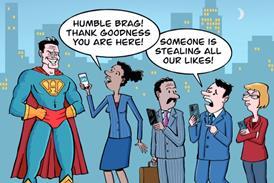This is every IT lawyer’s worst nightmare. You draft and negotiate a contract for a new IT system; the system fails; the claims start to fly; and a key issue is the interpretation of the contract that you drafted.
Pity, then, the lawyers involved in GB Gas Holdings Ltd v Accenture (UK) Ltd and others ([2009] All ER (D) 113), a £220m dispute between Accenture and British Gas over a failed IT system, where the meaning of certain terms in the contract became the subject of heated debate. Professional sympathy aside, the case is also a rare opportunity to look under the hood of someone else’s IT transaction, how the contracts were constructed, how the system went wrong and how the courts approached it.
In January 2002 British Gas and Accenture entered into an agreement for Accenture to design, supply and install a new IT system known as Jupiter. The Jupiter system was to be rolled out in a series of five releases, the third of which was a billing system to British Gas’s 18.8 million customers.
The agreement contained warranties in relation to the releases, which said that each release would comply in all material respects with its Statement of Release (an agreed statement of how the release should operate); that new releases would not affect the functionality of the previous releases; and that releases would be free from material errors and capable of providing certain benefits.
The contract provided that a breach of these warranties could be either a Fundamental Defect or a Material Defect, with different remedies depending upon whether a Defect was Fundamental or Material.
This distinction between different levels of defect in a system, and different remedies depending on the level of defect, is common in IT contracts. A defect may have a critical impact, in which case you need a strong and speedy remedy, or it may be merely a local irritant, with an easy work-around. Here, a Fundamental Defect was defined as a fundamental breach of warranty which causes a severe adverse effect, while a Material Defect was defined as a breach that has an adverse effect but is not a Fundamental Defect. Accenture agreed a warranty period for the system, with particular remedies available if British Gas gave notice of a Fundamental Defect within the warranty period.
By June 2006, Jupiter was in serious difficulties. A huge backlog of ‘exceptions’ had built up, these being particular gas bills that, for one reason or another, needed manual intervention before the bill could be issued. According to British Gas, at the height of the problem customer complaints trebled, they were forced to employ 2,500 extra staff to deal with this, and thousands of customers abandoned them for other suppliers. With the end of the warranty period looming, British Gas gave Accenture notice that Fundamental Defects had occurred. The notice was fairly high-level about the defects and their effect. British Gas said that the notice contained such information as was reasonably practical for them to give at the time.
The heart of the preliminary issues that came before the court was whether what had happened could amount to a Fundamental Defect and whether proper notice of the defects had been given. Put simply, the key questions of construction before the court were:The court applied well-established principles of construction to the contract, seeking to establish ‘the meaning which the document would convey to a reasonable person having all the background knowledge which would reasonably have been available to the parties in the situation in which they were at the time of the contract’ (Investors Compensation Scheme v West Bromwich Building Society ([1998] 1 WLR 896). It found that the breaches would indeed amount to Fundamental Defects (that is, that a Defect could still be Fundamental if it (1) was made up of several breaches that were non-fundamental, and (2) it was not having a severe effect when notice was given, but would do so if left unremedied). As regards the notice, the court held that since the clause was a limit on Accenture’s liability, the contra proferentem rule applied; but that even if it had not, British Gas had given sufficient notice of the defects. It also held that Accenture would have needed much clearer words to block British Gas’s right to costs arising from the defects that it had incurred prior to service of the notice.
- whether for a breach to amount to a Fundamental Defect, each individual breach of warranty had be fundamental, and individually have a severe adverse effect; or, whether a number of non-fundamental breaches could combine to become a Fundamental Defect, and their impacts aggregate to a severe adverse effect;
- whether, for the purposes of giving notice of the defects, the breach must have caused a ‘severe adverse effect’ before it was notified to Accenture, or whether it was sufficient if, at the time of notification, the breach had started to or would cause a severe adverse effect if left unremedied; whether in order to constitute a valid notice, the notice had to specify the warranties breached, the nature of the alleged errors, and the alleged severe adverse effect; and whether British Gas was entitled to recover costs incurred prior to service of the notice.
Could the risk of a dispute over the interpretation of the contract have been lowered? Hindsight is a wonderful thing, and in this case quite possibly not. But the lesson that practitioners might draw if they are drafting or negotiating IT contacts, is the many different ways that faults in a large software system can occur and then manifest themselves. It can take time to establish what the fault is, like finding a needle in a haystack. You have thousands upon thousands of lines of software code, and investigators may only have a dim idea of what they are looking for. A badly written section of code? Poor interface between what are otherwise well-written functions? And are you looking for a big defect, or a small one? Sometimes an otherwise minor defect can have a series of serious knock-on effects, like a tumbling pebble that causes an avalanche. Sometimes the seriousness of the impact of a minor problem only surfaces much later. Practitioners need to bear in mind the complexities that can arise when there are problems with new software systems, and try to make clear provision for what will happen if they do. And as the court found, a supplier must use very clear wording, if it is seeking to limit its liability for faults.
Stars Wars, the sequelTired of being a lawyer? Ever thought of manufacturing sci-fi replicas? Following a recent Court of Appeal decision on the protection – or lack of protection – afforded to equipment made for the film Star Wars, you may be able to (Lucas Film Ltd and Ors v Andrew Ainsworth and Ors [2009] EWCA Civ 1328). The judgment is a useful reminder that intellectual property rights are time-barred, and that when they have expired, they have expired. The Court of Appeal also had useful things to say about the enforceability of foreign IPR in the UK, in particular in the context of sales abroad via the internet.
One of the abiding images of Star Wars is the white armour and helmets of the Imperial Stormtroopers. These were originally conceived in drawings made in collaboration with George Lucas, the film’s director. Based on those drawings, the defendant Andrew Ainsworth, a model-maker at Shepperton Design Studios, prepared the first vacuum-moulded helmets and armour used in the film.
Mr Ainsworth kept his tools, and many years later started to sell replica helmets and armour via the internet (aficionados like to suit-up and organise themselves into Stormtrooper ‘Garrisons’. No, really.). The claimants, who were the film production and licensing companies behind Star Wars, brought claims against Mr Ainsworth for copyright infringement and passing off. But the claimants had a serious problem: design right. Design right is a carve-out from copyright, first introduced in the UK in 1988. It protects ‘any aspect of the shape or configuration (whether internal or external) of the whole or part of an article, other than surface decoration’ (Copyright, Designs & Patents Act 1988 section 51(3)). The protection that it confers lasts for 15 years (with third parties entitled to a licence-of-right in the last five years), compared to a whopping 70 years for most forms of copyright. But here’s the rub: if design right subsists in an article, it is not an infringement of copyright to make or copy an article to the design (ibid. section 51(1)). In other words, if design right subsists, then you must apply the law of design right, not copyright. And if design right had subsisted in the Stormtrooper helmets and armour, then it was long expired.
The claimants were therefore frantic to claim that the Stormtrooper kit was covered by copyright rather than design right, and much of their claim revolved around whether, rather than being an ‘article’ (in which case it was covered by design right), it was either a ‘sculpture’ or a ‘work of artistic craftsmanship’ (in which case it would have been subject to copyright under section 4 of the 1988 act).
The Court of Appeal upheld the first instance decision that the kit was merely an ‘article’. The question was the purposive nature of the object. The intrinsic quality of a sculpture is that it is intended to be enjoyed as a visual thing, and most people would not regard a soldier’s helmet as a sculpture. They were therefore protected by design right, and any claim in copyright was barred.
It is worth rehearsing some of the practical effects of this judgment. First, not only are the Stormtrooper helmets and armour not protected by copyright, they were not protected at all. Again, design right protection was long expired. It is not just Mr Ainsworth who is entitled to make them, anyone is. But care is still needed. In particular, Mr Ainsworth was careful in his business not to misuse Star Wars trade marks, or to suggest that the models were produced with Lucasfilms’ consent or licence (which is why Lucasfilms’ claim in passing off failed, too).
Second, the judgment shows the possible breadth of the objects to which that design right applies. Any article designed for film or television may be protected only for the short lifespan of design right. Toys, models and other commercial articles may only enjoy a brief period of protection. There is a common perception that a created object must somehow be protected by some intellectual property right or other. It simply isn’t true; for many articles and products, protection is long gone.
What can merchandisers, toy makers and designers of commercial articles do to protect their products more effectively in the UK? The answer is, to register the design. In 2003 the European Commission introduced an EU-wide design right (Commission Directive 98/71). Registered Community design lasts for 25 years and protects the design across the whole of the European Union. A design can be registered up to one year after it is first marketed, and so designers can test the market with a new design and only register the successful ones. Registration is easy and cheap – for an easy ‘how-to’ guide, practitioners should see, ([2008] Gazette, 24 January, 26). It is surprising how little design registration is taken up by the creative industries. A brief search of the Community Design Registry reveals very few registrations for designs of toys, dolls, costumes, or inter-galactic battle armour. The creators are running a risk.
There had been a sting in the tail for Mr Ainsworth at first instance, as the court had suggested that Lucasfilms could enforce a judgment in default against him that it had obtained in the US for breach of US copyright. The Court of Appeal firmly rejected this part of the first instance decision. It made it clear that copyright is territorial, in other words, you cannot start enforcing breaches of US copyright in the UK courts. Mr Ainsworth’s website was not enough to give him the necessary presence in the US, even though it was accessible in the US, and even though he had made sales in the US via the website. The court said that trade via the internet was not materially different to trade by telephone, letter or telex.
This will be a handy point for clients who make internet sales in other countries.
Richard Taylor, DLA Piper, Yorkshire

























No comments yet